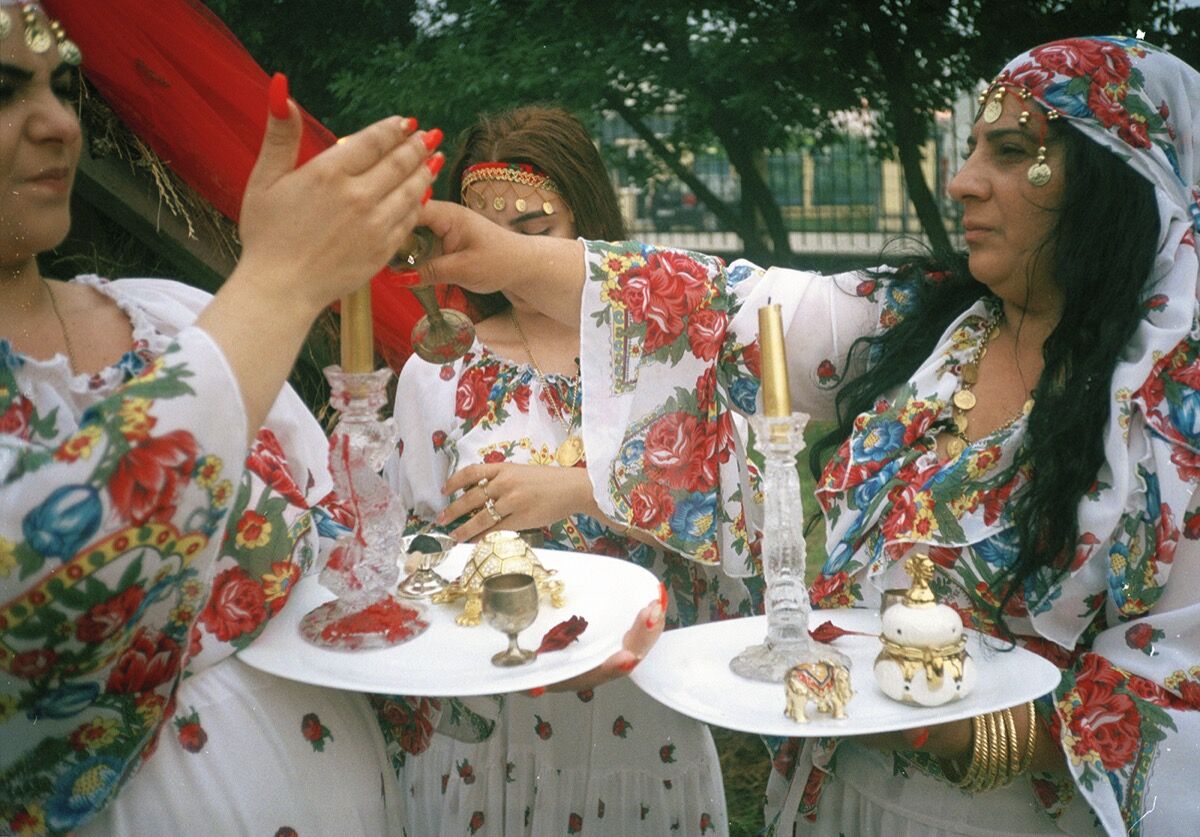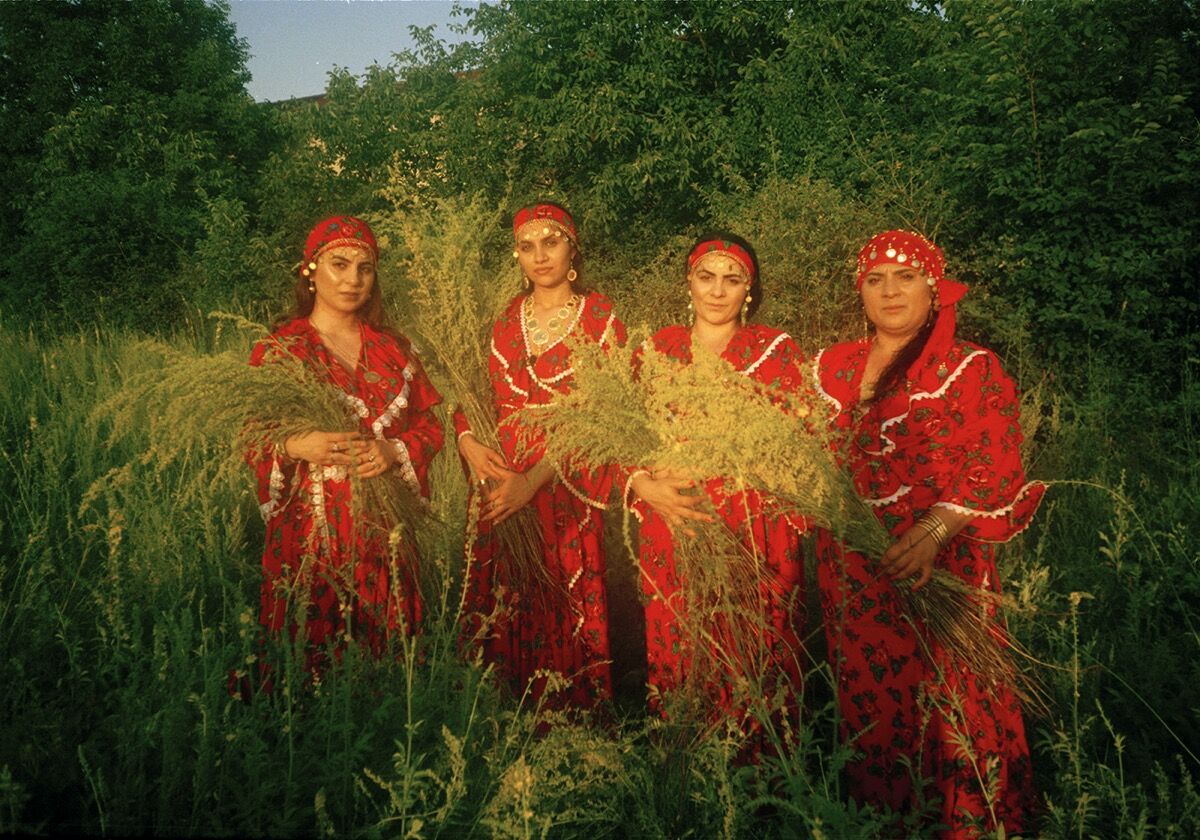The Photographer Capturing Intimate Images of Witches in Romania

artsy_Mihaela Minca is one of the most famous witches in Romania. She and her coven—all women of the traditionally itinerant Roma minority—live at the margins of European society, in the suburbs of Bucharest. There, they make a living through conducting rituals that help their clients find love, money, and adequate punishments for their enemies.
Sometimes, the witches’ endeavors extend beyond the personal: This past year, Minca cast a spell against political corruption in her country by dumping black liquor outside a Romanian government building. The next day, the state issued a final sentencing for Social Democratic Party leader Liviu Dragnea, who’d used his own power to create fake jobs and appealed prior convictions.

Virginia Lupu, from the series “Tin Tin Tin,” 2018–19. Courtesy of the artist.
“Although many would say it’s just a coincidence, this really did happen,” Romanian photographer Virginia Lupu
recently wrote to me, recalling the incident. Lupu, previously known for her images of transgender Romanians, has befriended the witches and captured them in intimate photographs. Her series “TinTinTin” (2018–19)—on view at the Art Encounters Biennial in Timișoara, Romania, through October 27th—offers a rare vision of this mystical, matriarchal community.
Lupu captured her subjects in cantatory action, adorned in traditional garb. The women’s gowns range from flowing, virginal white garments to fire engine–red robes with floral patterns. In one image, the witches light candles on a plush, decorative area rug that features intertwining brown branches and leaves. Glittering skulls and a furry black object center their makeshift altar. In another photograph, the protagonists raise leafy greens above a body of water as the sun sets. Their hands are embellished with gold bracelets, thick rings, and long candy apple–colored nails. Whatever spell they’re casting, these women invoke craft and fashion to enhance their potency.

Virginia Lupu, from the series “Tin Tin Tin,” 2018–19. Courtesy of the artist.
The photographer, in fact, first got in touch with the witches because of a design story. The Berlin-based magazine Another Man was seeking out Roma interiors that would be appropriate for a fashion shoot, and contacted Lupu for help. “I thought of witches,” she said. Lupu made some calls and reached Mihaela Minca. The photographer soon befriended Minca through attending her family festivities: Minca’s children’s weddings, Christmas dinner, and birthday celebrations. At first, Lupu wasn’t even interested in capturing the witches on film. “I didn’t want to take photos,” she said. “I was just very passionate about their esoterism and about witchcraft.” Yet the visual opportunity eventually became too great to pass up, and the community welcomed Lupu’s camera.
Lupu discovered a significant aesthetic element in the witches’ rituals. She observed Minca using a different color palette for each type of spell. “Red for love, yellow for abundance and richness, white for blessing, and black for powerful black magic rituals,” Lupu explained. The women’s recipes and activities aren’t centralized in any kind of book, but passed down from generation to generation.

Virginia Lupu, from the series “Tin Tin Tin,” 2018–19. Courtesy of the artist.
There’s an appropriate familial appearance to Lupu’s shots: They’re more candid than composed, more interested in understanding these women as individuals than as anthropological curiosities. In one frame, Lupu captures the women together, sunlit in a field. In another, a lone woman rests in the center, surrounded by large white flowers, and holding a broomstick with a doll at the end. Lupu doesn’t stage her subjects to look any more or less appealing, she simply captures the women as they are. Lupu said she aims to demythologize and destigmatize alternative spiritual practices through revealing practitioners’ humanity. Yet she also hopes viewers will better appreciate Roma superstitions, magical practices, and witchcraft.
In the age of drugstores, Fitbits, life coaches, and ZocDoc, it can be all too easy to dismiss the efficacy of ritual. Yet Lupu trains her lens on the witches’ camaraderie, compassion, and sense of tradition. In her photographs, they look healthier and happier than many an alienated subject of cosmopolitan street photography. “Witches can be our protectors, and witchcraft can help with healing and self-care,” Lupu said. “Practicing witchcraft is a tool for survival—and survival is important for marginalized communities in capitalism.”
